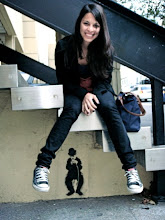
It is evident that German expressionism and films from the Weimar period had a significant impact on Bergman when he made The Hour of the Wolf. The interest and fascination with psychology and the parallel worlds created by the mind were a concerned explored in German expressionism and revisited and re-explored by Bergman. The Hour of the Wolf seems to have a combination of elements from Nosferatu and The Cabinet of Dr. Caligari because it intertwined concept of the supernatural with the interrogative of insanity and obsession.
In addition, the aesthetic choices made by Bergman are in alignment with German expressionism. There is an extensive use of chiaroscuro where darkness predominates the frames while white and light are rare and very suggestive. For instance, Alma tends to be illuminated while the people around her are under dark shadows. This evokes the idea that she is different, pure, and sane. In addition, the use of key light creates pockets of shadows, morphing people’s faces into malicious smiles or perilous ravens.
Even though this film would not be necessarily classified as a horror film, it is definitely unsettling. The use of fast editing choreographed with sudden high pitching was very effective. In fact, it made me jump off my seat more than a couple of times. This is mostly evident in the sequence where Johan (the husband) kills the young boy. Distorted close-ups of different angles of the fight between the boy and Johan are edited at a fast pace combined with hunting and uncomfortable music. In addition, once Johan has killed the boy he throws him into the water, which is pitch black and denser than it should be, resembling a puddle of blood.
Even though this film might be significantly different from the rest of Bergman’s films, it has in common the strong presence of touch. This is a theme that is elaborated throughout the whole film. For example, there is the constant refusal of Johan towards Alma’s touch, and a common desire of the women of the castle to be touched and have contact with Johan. However, this theme reaches its ecstatic point towards the end of the film when Johan finds the presumably dead body of his life long obsession, Veronica Vogler. Through a close-up, the camera moves along Veronica’s inert and naked body following Johan’s hand. The interesting fact is that his touch is what seems to bring her back to life, delving into the ideas of resurrection, deception, and madness.



